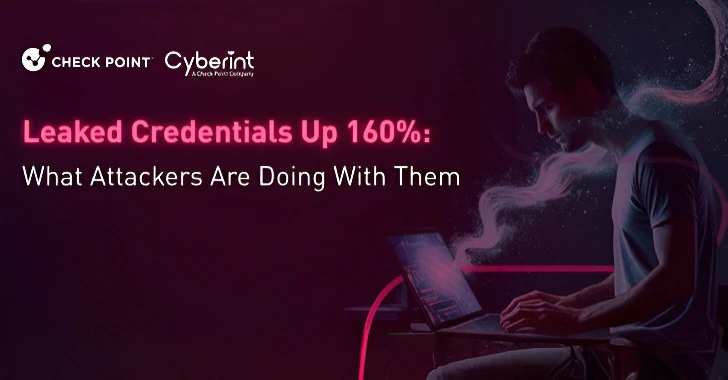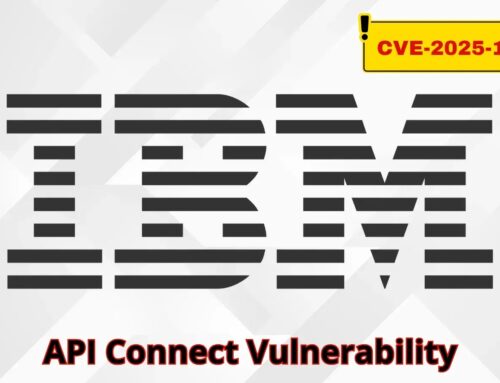
Leaked Credentials Up 160%: What Attackers Are Doing With Them
Leaked Credentials Soar 160%: The Silent Threat Fueling Breaches
Imagine a lock on your most valuable assets, a lock you believed to be secure. Now, imagine the keys to that lock being openly distributed, often without your immediate knowledge. This is the stark reality organizations face as leaked credentials skyrocket, providing attackers with an alarmingly simple entry point into sensitive systems.
Far from the intricate, cinematic cyberattacks often depicted, many real-world breaches begin with something deceptively straightforward: a username and password. While the immediate aftermath of a credential leak might appear quiet, the long-term ramifications are profound and far-reaching. Adversaries are actively exploiting these exposed keys to unlock a Pandora’s Box of corporate data, intellectual property, and operational control.
The scale of this problem is rapidly escalating. According to alarming new data, leaked credentials have seen a staggering 160% increase, becoming one of the most prominent initial footholds for cybercriminals. Verizon’s 2025 Data Breach Investigations Report underscores this trend, revealing that credentials accounted for a significant 22% of all breaches. This critical vulnerability demands immediate attention and robust defensive strategies from every organization.
The Anatomy of a Credential-Driven Breach
When credentials are leaked, attackers gain an invaluable advantage: legitimate access. This isn’t a complex exploit requiring zero-days or sophisticated malware in the initial phase. It’s often as simple as logging in. This “access” allows for a multitude of malicious activities:
- Initial Access: Leaked credentials provide a direct entry point into networks, applications, and cloud environments. This bypasses many perimeter defenses and detection mechanisms that are designed to spot unusual network behavior or malware.
- Lateral Movement: Once inside, an attacker can use compromised credentials to move freely across the network, escalating privileges, and discovering more valuable assets. This often involves credential stuffing attacks against internal systems or exploiting weak authentication protocols.
- Data Exfiltration: With elevated access, threat actors can identify and extract sensitive data, including customer information, financial records, proprietary designs, and trade secrets. This often goes undetected until significant damage has occurred.
- System Sabotage and Ransomware: Administrator-level credentials can be used to disable security controls, deploy ransomware, or wipe critical systems, leading to operational disruption and massive financial losses.
- Supply Chain Compromise: Credentials belonging to partners or suppliers can be leveraged to infiltrate an organization’s supply chain, creating a cascading effect of breaches across interconnected entities.
Common Sources of Credential Leaks
The pathways for credentials to fall into the wrong hands are numerous and varied:
- Third-Party Breaches: A significant portion of credential leaks originates from breaches at third-party services or vendors that store user data. When these partners are compromised, credentials associated with their services can be stolen.
- Phishing and Social Engineering: Attackers craft sophisticated phishing campaigns designed to trick users into divulging their login details on fake websites or through deceptive communications.
- Malware and Infostealers: Malware strains, particularly information stealers (e.g., RedLine Stealer, Raccoon Stealer), actively scrape browsers and system files for stored credentials, cookies, and other sensitive information.
- Weak Password Practices: The continued use of weak, easily guessable, or reused passwords across multiple platforms dramatically increases the risk.
- Publicly Exposed Databases/Repositories: Misconfigured databases, open S3 buckets, or poorly secured code repositories (like GitHub with exposed credentials) can inadvertently expose sensitive authentication data.
- Lack of Multi-Factor Authentication (MFA): Without MFA, stolen credentials offer immediate, unrestricted access, making them far more valuable to attackers.
Remediation Actions: Stemming the Credential Tide
Combating the surge in leaked credentials requires a multi-layered, proactive defense strategy. Organizations must assume that some credentials will eventually be exposed and build resilience accordingly.
- Implement Robust Multi-Factor Authentication (MFA) Everywhere: This is arguably the most critical defense. Even if credentials are stolen, MFA acts as a second barrier. Strongly favor hardware tokens (FIDO2/WebAuthn), strong authenticator apps, and biometrics over SMS-based MFA, which is susceptible to SIM swapping attacks.
- Monitor for Leaked Credentials: Proactively monitor dark web forums, paste sites, and public data dumps for your organization’s domain and user credentials. Services like Have I Been Pwned’s API for enterprises, or commercial threat intelligence platforms, can assist with this.
- Enforce Strong Password Policies: Mandate long, complex, and unique passwords. Encourage the use of password managers for employees. Consider passwordless authentication where feasible.
- Employee Security Awareness Training: Regularly educate employees on phishing tactics, social engineering, and the importance of strong password hygiene. Emphasize the risks of reusing passwords and clicking suspicious links.
- Principle of Least Privilege (PoLP): Grant users only the minimum necessary permissions to perform their job functions. This limits lateral movement even if an account is compromised.
- Regular Credential Rotation: For highly privileged accounts, implement a schedule for mandatory password changes.
- Network Segmentation: Segment your network to contain breaches and prevent lateral movement, even if an attacker gains initial access through compromised credentials.
- Endpoint Detection and Response (EDR) & Security Information and Event Management (SIEM): Deploy EDR solutions on all endpoints to detect suspicious activity indicative of credential theft or abuse (e.g., CVE-2021-36934 related to SAM account credential exposure). Integrate with a SIEM for centralized logging and anomaly detection related to login attempts and access patterns.
- Supply Chain Security Audits: Vet third-party vendors and partners for their security postures, specifically focusing on their handling of your organization’s data and credentials.
- Decommission Old Accounts: Promptly remove or disable accounts for former employees or those no longer requiring access to specific systems.
Tools for Credential Monitoring and Mitigation
| Tool Name | Purpose | Link |
|---|---|---|
| Have I Been Pwned (HIBP) | Personal and enterprise domain breach monitoring. | https://haveibeenpwned.com/ |
| Dark Web Monitoring Services | Commercial services for proactive credential leak detection. | (Varies by vendor, e.g., Mandiant, CrowdStrike Identity Protection) |
| Password Managers (e.g., LastPass, 1Password) | Securely store and generate unique, strong passwords for employees. | (Varies by vendor) |
| Multi-Factor Authentication (MFA) Solutions | Adds a second layer of authentication. | (Varies by vendor, e.g., Duo Security, Microsoft Authenticator) |
| DCSYNCMonitor (BloodHound/AD Recon) | Detects DCSync attacks (leveraging compromised credentials for domain controller replication). | https://github.com/BloodHoundAD/BloodHound |
| Mimikatz | Post-exploitation tool to extract credentials from memory. (Used by attackers and defenders for testing). | https://github.com/gentilkiwi/mimikatz |
Conclusion: A Call to Action Against Credential Compromise
The alarming 160% surge in leaked credentials serves as a critical warning. While the initial compromise may be subtle, the subsequent damage can be catastrophic, leading to widespread data breaches, financial losses, and significant reputational harm. Organizations can no longer afford to view credential management as a tertiary concern; it must be elevated to a top security priority.
By adopting a robust security posture centered around strong authentication, proactive monitoring, continuous employee education, and stringent access controls, businesses can significantly reduce their attack surface and resilience against this pervasive threat. The keys to your kingdom are only as secure as their weakest link; securing credentials is not just an IT task, it is a fundamental business imperative.





